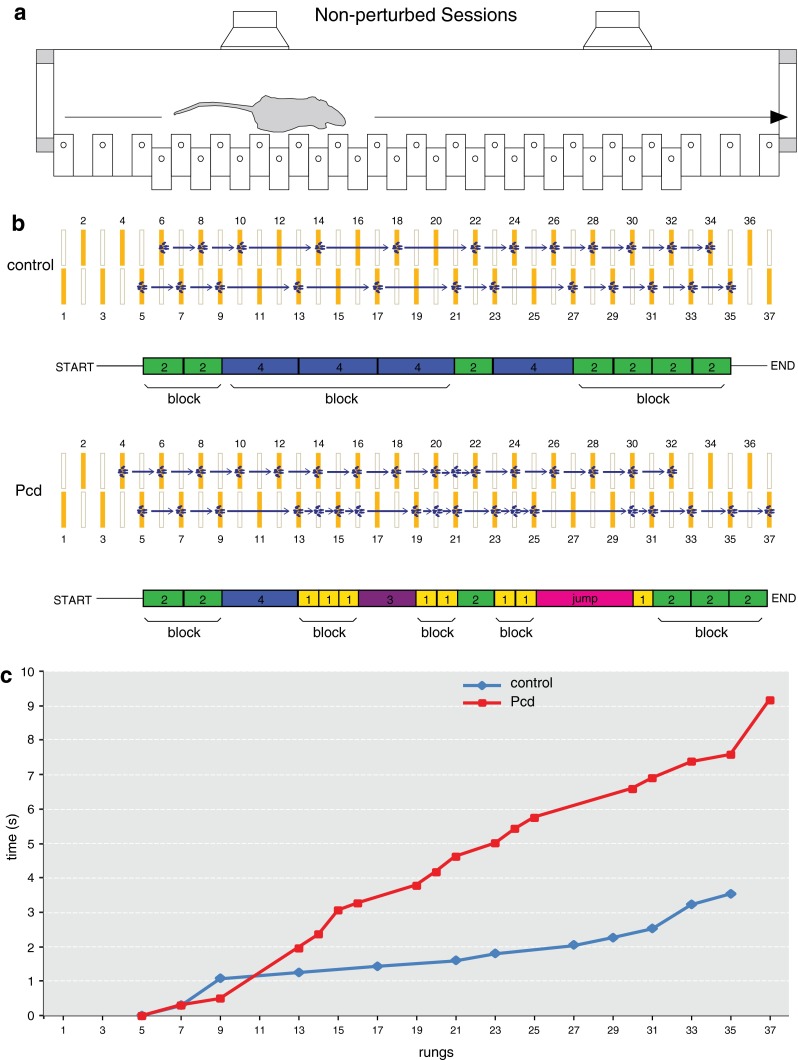Fig. 3.

Baseline locomotion is tested during non-perturbed sessions. a Each daily session consisted of 72 trials, during which the mice had to walk back and forth from one shelter box to the other. Right from the beginning of the experiment, most of the mice usually stepped only on the upper rungs and only infrequently touched the lower ones, which was considered as a misstep. b The rungs of the ladder have custom-made pressure sensors. The upper rungs, which are indicated by closed yellow symbols, are positioned in a left–right alternating pattern. The blue footprints represent the typical touches of the front paws of a control (top) and Pcd mouse (bottom) during a representative trial on the ladder. A single step (arrow) corresponds to a front paw step. The steps are classified according to their length and direction, and they are represented as colored rectangles located below the ladders. Consecutive single steps of the same length merge to build “blocks”. c Time course of the trials is depicted in b. Symbols represent single touches
